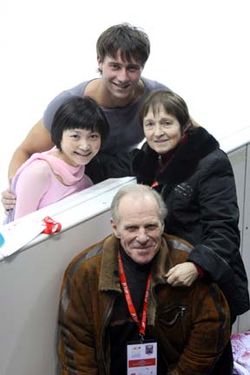
The team physician for a sports team is the physician who is in charge of coordinating the medical staff and medical services for a sports team. They are also subject to activities involving team building. [1] [2] [3] The goal of a team physician is to improve performance and overall health. The physician is trained in Orthopedic surgery, Internal Medicine, Family Medicine, or Emergency Medicine. [4] They also focuses on injury prevention with nutrition and activity to improve support in athletic activities. [5] Requirements to become a team physician include four years of undergraduate study, four years of medical school, four to five years of medical residency, and one year of fellowship training. [6]